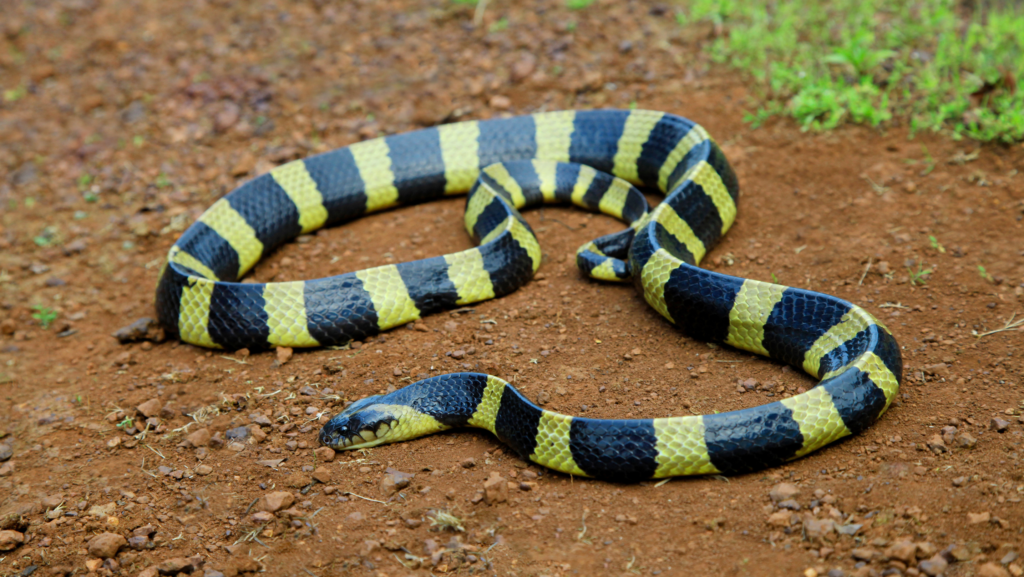Birth:

The banded krait (Bungarus fasciatus), a venomous snake found in various parts of Southeast Asia, begins its life as an egg. The female krait lays a clutch of eggs in concealed locations, such as burrows or leaf litter, during the warmer months. The eggs are typically left unattended, and the mother does not provide any maternal care.
Growth and Development:
Once the eggs hatch, the baby kraits emerge as small, slender snakes with distinctive bands of black and white or yellow running along their bodies. As they grow, these bands become more pronounced, aiding in their identification. The young kraits are equipped with venom from birth and start actively hunting for small reptiles, amphibians, and other prey to fuel their rapid growth.
Life and Behavior:

Banded kraits are nocturnal hunters, preferring to venture out under the cover of darkness. They are highly secretive and often hide in vegetation, burrows, or other concealed locations during the day. Known for their potent neurotoxic venom, banded kraits are capable hunters and use their excellent sense of smell to locate prey.
Food and Feeding Habits:
Banded kraits primarily feed on other snakes, reptiles, and small mammals. Their venom immobilizes and subdues their prey, allowing them to swallow it whole. Despite their potent venom, banded kraits are generally not aggressive toward humans unless threatened or cornered. Their diet plays a crucial role in maintaining the balance of the ecosystem by controlling the population of smaller animals.
Reproductive Process:

As banded kraits reach sexual maturity, they engage in courtship rituals, typically during the breeding season. Mating involves complex behaviors, including the male following the female and intricate intertwining. The female then lays a clutch of eggs, usually in a secluded location, and leaves them to develop independently. The reproductive cycle contributes to the continuation of the species.
Death:
The lifespan of a banded krait can vary, with factors such as predation, environmental conditions, and human activities playing significant roles. Despite their potentially lethal venom, banded kraits face threats from larger predators, habitat loss, and human persecution. While some individuals succumb to natural causes or predation, others fall victim to human activities like habitat destruction, road mortality, or intentional killing due to fear.
Understanding the life cycle of the banded krait is crucial for conservation efforts. These snakes play a vital role in maintaining the ecological balance by controlling populations of small mammals and reptiles. Conservation initiatives aim to protect their habitats and raise awareness to mitigate the risks they face in an ever-changing environment.

